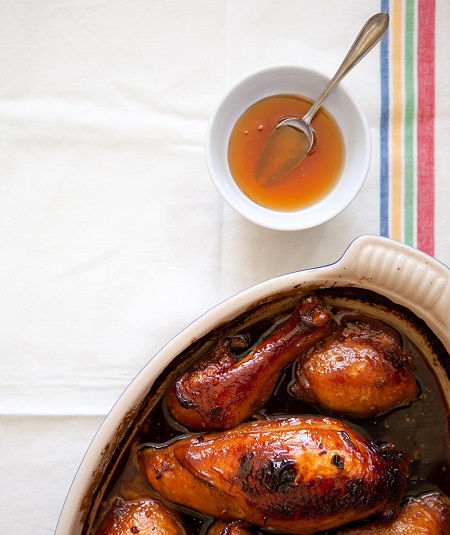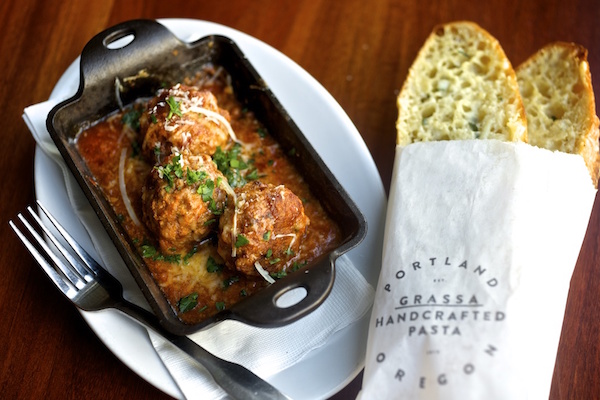It’s 4 a.m. The aroma of fresh bread comes from flaming ovens. Buttery croissants are rolled, cut and shaped by hand at Ken’s Artisan Bakery in Portland. An hour later, the sweet smell of fresh baguette dough wafts past four bakers in jeans, t-shirts and aprons, their heads down, their floured hands dividing and shaping smooth, long loaves. The oven door clanks as the bread goes in.
“It smells like a street corner in Paris to me,” says Ken Forkish, the bakery owner, confident that he has succeeded in his perfectionist pursuit of making bread on par with the best Parisian boulangeries.
The reinvention of the American culinary scene has such artisans at its core—particularly in Oregon, where bread is a staple in the movement. “My light bulb moment came when I went to Paris and tasted Poilânestyle bread,” says Forkish, who was working in sales and engineering for high tech companies when he first read about Poilâne—a famous French boulanger—in a Smithsonian magazine cover story in 1995. “It had piqued my interest for bread as having a wine-like complexity to it.”
His passion took him by the hand and to the very top. In 2008, Forkish was a semi-finalist for the James Beard Award for outstanding pastry chef.
One of his specialties is the batard, with its nutty flavors and open, glistening interior wells. Along with a boule and demi-baguette, these country brown breads are modeled after France’s famous pain Poilâne.
With his baguettes, Forkish takes the craft in a different direction, achieving fine texture, crispy crust and delicate flavor. His walnut bread begs to be toasted and eaten with butter and honey, or savored in a pear and goat cheese sandwich. The ciabatta, with its light, soft interior (what bakers call, the ‘crumb’), is the perfect vehicle for sopping up that last bit of savory sauce on the plate of some of Portland’s best restaurants, where Forkish’s breads are also served.
The breads are works of art, made in his bakery in Northwest Portland. All of the folding, dividing, shaping and baking is done by hand. Like most artisan bakers, the only machine used is a mixer, following the “retro-innovation” concept of Poilâne. The Frenchman re-established the standard for traditional handcrafted bread in the 1970s, with the only modern time-saving element being machine kneading.
Forkish points to time and temperature as being artisan bread’s two most important ingredients. “You need enough time to get the right flavors and for the physical characteristics to develop,” says Forkish. Hisgoal is to allow the flavor of the grain to come through, while building the character through dough fermentation. Depending on how that process is manipulated, the flavor can range from the lactic, milky end of the spectrum to an acidic, vinegary flavor, such as the tang you’d find in an American sourdough.
For example, Forkish bakes his country blonde loaf to a dark reddish-brown color to achieve that caramelized, slightly bitter taste that seeps into the crumb. Although he remains dedicated to the artisan ideal, Forkish says the term has gone from rarity to commonality and is losing its meaning. “When you have a national chain promoting ‘artisan’ pizza, and you have ‘artisan’ bread at Safeway that has barely touched human hands, it takes the soul out of the word.”
Whitney Blackman opened The Sparrow Bakery in Bend in 2006, having spent the previous year working at Ken’s Artisan Bakery, straight out of college with an English degree. She was determined to raise the bar for bread in the town, which was booming with new residents and restaurants. The baguette is her most popular bread, though closely followed by miche, a French country sourdough.
“I think that the bread we produce is truly the only French bread in town,” she says. “I love to be able to offer it to restaurants and keep the standards as high as with any urban restaurant in Portland.”
Blackman considers the ability to recognize and address seasonal changes in flour and the climate east of the Cascades an important part of her baking. Minute changes in wheat harvested in winter versus summer could have a magnified effect on the bread, she says. The abrupt transition between spring and summer temperatures and humidity in the bakery affects the retarding process—a second, slower fermentation of the dough.
“We train our bakers to be flexible and sensitive, and give them a lot of tools for how to react when the bread is showing characteristics it was not showing yesterday,” she says. “It’s not something you can do with your eyes closed, a brainless activity.”
The recent trend toward gluten-free diets isn’t an existential threat to the baker, she says, but more of a blip in the ancient link between bread and humanity. “Baking bread is still one of the most romantic and elemental things: the beautiful, classic French baguette, scored all the way down, and you rip it apart with your hands—that’s where it’s at,” she says.
At the Blue Scorcher Bakery Cafe, a collective in Astoria, all of the breads are made with organic flours, stone ground when possible and baked with steam on a stone hearth. They are all hand shaped, and some are even hand mixed, including one that worker-owner Joe Garrison is most proud of: tartine, a style of whole grain sourdough.
Garrison started making tartine after hearing about San Francisco baker Chad Robertson, who, in his bakery, Tartine, is reintroducing wet dough, a process which must be done completely by hand. “It is a nightmare to handle, but when you figure out the rhythm, and get it in a really hot oven to get the water out, it’s slower and fussier, but the result is the best bread you’ve ever had,” Garrison contests.
Even before you taste a loaf of artisan bread, he says, you’ll notice one of its most important features—the aroma. The process behind that is fermentation. “This process is so often undervalued and rushed out of existence today,” Garrison says.
A mixture of aromas, from buttery and warm to sweet and subtly spicy, waft through Blue Scorcher, emanating from traditional Finnish ryes, braided cardamom Swedish pulla bread, hot cross buns and seasonal specialties such as Italian Easter bread.
Garrison’s inspiration was the Home Spirit Bakery, a bakery in town he loved when he and his wife, Iris Sullivan Daire, moved to Astoria in 1996. “It was a wonderful little bakery in a Victorian house and part of what made us love Astoria right from the first time we came to visit,” he says.
In 2004, Garrison was working in a bike shop when he heard the bakery was closing. “The food co-op here has been strong for decades, and five of us said, ‘This town needs good bread,’” he says.
They took over—two bike mechanics, an aspiring rock star, a social worker and Sullivan Daire, a weaving instructor who was the lone baker among them.
“People need good bread, and it’s more than just physical,” he says. “It’s somewhat of a spiritual need. They need to know that there’s a baker in their midst, making bread that’s good for them.”








